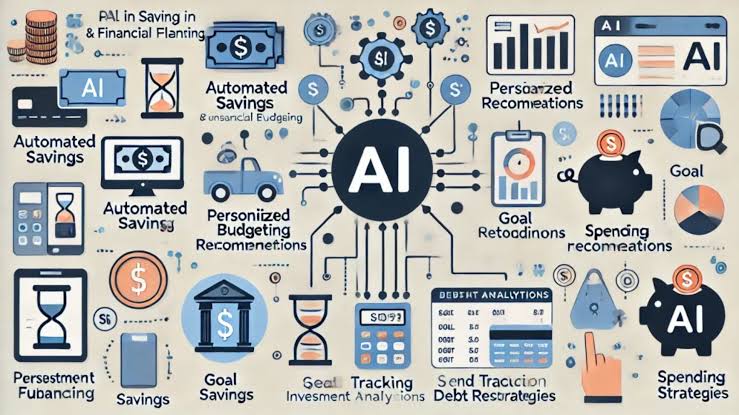AI is not just improving finance—it’s reshaping its foundation. From how we assess risk and serve customers to how we invest and ensure compliance, artificial intelligence is changing what’s possible.
As of June 2025, artificial intelligence has become a driving force behind some of the most significant advancements in the financial industry. From automating tedious back-office tasks to making complex investment decisions, AI is no longer a futuristic concept but an essential component of modern financial operations. Fintech startups, global banks, asset managers, and even insurers are leveraging AI to stay competitive, reduce risk, and provide better services. Here’s a comprehensive look at the top 10 applications of AI in finance as we move deeper into a data-powered era.
10. AI-powered regulatory compliance (RegTech)
Financial institutions must comply with ever-changing regulations that span different markets and jurisdictions. AI tools in RegTech use machine learning and natural language processing to scan legal documents, identify risks, and automate reporting processes. This saves enormous amounts of time and reduces human error. In 2025, platforms like Ascent and Ayasdi are helping firms stay ahead of regulatory shifts by offering real-time compliance monitoring, automatic alert systems, and predictive assessments of regulatory impact.
9. AI in insurance underwriting
Insurers are using AI to assess risk more accurately and price policies more fairly. Rather than relying solely on historical data, AI algorithms now analyze a range of inputs—from online behavior and driving records to health data and environmental risks. This allows for faster, more accurate underwriting decisions. Companies like Tractable and Lemonade are using AI not only for risk assessment but also for automating claims processing, fraud detection, and customer communication.
8. AI-driven customer service in banking
Banks and other financial institutions are increasingly using AI chatbots and virtual assistants to handle basic customer service functions. These tools are now capable of more than just answering FAQs—they can open new accounts, transfer money, suggest financial products, and troubleshoot issues. In 2025, solutions like Erica from Bank of America, Kasisto, and Cleo deliver highly personalized support based on user behavior and financial habits, reducing the need for human intervention in routine interactions.
7. Intelligent accounting automation
AI is transforming the way companies handle accounting by automating repetitive tasks such as invoice entry, expense categorization, and bank reconciliation. Systems like QuickBooks with AI, Xero, and Vic.ai help finance teams move from manual bookkeeping to strategic decision-making. These tools also provide real-time insights into cash flow, flag unusual transactions, and generate predictive reports to help with budgeting and forecasting.
6. AI for fraud detection and prevention
Financial fraud is becoming more sophisticated, but so are the tools used to prevent it. AI models can detect unusual patterns in transactions, identify anomalies, and flag potential threats within milliseconds. These systems are trained to learn from each case and adapt to new forms of fraud. Companies like Feedzai, Darktrace, and Mastercard’s Decision Intelligence are leading the way in using AI to safeguard digital transactions and reduce fraud-related losses across the financial ecosystem.
5. AI in risk management
Financial institutions deal with various forms of risk—credit, operational, market, and liquidity risks. AI helps manage these risks by running simulations, forecasting stress scenarios, and identifying vulnerabilities before they cause serious damage. Advanced platforms analyze a combination of internal data and external signals such as market news, political events, and macroeconomic indicators to make informed risk decisions. SAS and Kabbage are among the tools helping firms make risk management more predictive than reactive.
4. AI-enhanced credit scoring
Traditional credit scoring models often fail to capture the full financial picture, especially for people with limited credit histories. AI-based credit scoring uses a broader range of data sources like digital payment behavior, smartphone usage, social interactions, and even employment patterns to determine creditworthiness. In 2025, companies like Zest AI, Upstart, and LenddoEFL are helping lenders approve more applications with lower risk by using fairer and more inclusive machine learning models.
3. AI for portfolio management and robo-advisors
AI has given rise to smarter robo-advisors that automate investment management based on an individual’s goals, risk tolerance, and market trends. These platforms continually monitor portfolios and rebalance them as needed, reacting instantly to global news or stock market changes. Wealthfront, Betterment, and SigFig are at the forefront of this transformation, offering cost-effective, algorithm-driven investment strategies that previously required a human advisor. AI ensures portfolios stay optimized with minimal user intervention.
2. Predictive analytics for financial forecasting
Forecasting future revenues, expenses, and investment opportunities is no longer guesswork. AI enables financial teams to analyze historical data, market signals, and real-time events to generate highly accurate predictions. Platforms like Prevedere, IBM Planning Analytics, and Planful provide dynamic financial models that update automatically, helping businesses adjust strategies in real time. These tools are especially valuable during economic uncertainty, allowing firms to respond quickly to changing conditions.
1. Algorithmic trading and AI in capital markets
Topping the list is the use of AI in trading. Algorithmic trading platforms rely on AI models to analyze market data, assess sentiment, monitor global events, and execute trades with precision and speed. In 2025, traders are using tools like QuantConnect, Alpaca, and Numerai to develop, backtest, and deploy trading strategies without relying on emotion or outdated signals. These platforms use real-time data to adjust to market volatility and identify patterns faster than any human ever could, making them essential to modern asset management.
